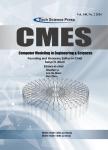Task Offloading in Edge Computing Using GNNs and DQN
作者机构:Department of Applied MathematicsUniversity of the Basque Country UPV/EHUEibar20600Spain TECNALIABasque Research and Technology Alliance(BRTA)San Sebastian20009Spain
出 版 物:《Computer Modeling in Engineering & Sciences》 (工程与科学中的计算机建模(英文))
年 卷 期:2024年第139卷第6期
页 面:2649-2671页
核心收录:
学科分类:08[工学] 0701[理学-数学] 0812[工学-计算机科学与技术(可授工学、理学学位)]
基 金:funding from TECNALIA,Basque Research and Technology Alliance(BRTA) supported by the project aOptimization of Deep Learning algorithms for Edge IoT devices for sensorization and control in Buildings and Infrastructures(EMBED)funded by the Gipuzkoa Provincial Council and approved under the 2023 call of the Guipuzcoan Network of Science,Technology and Innovation Program with File Number 2023-CIEN-000051-01.
主 题:Edge computing edge offloading fog computing task offloading
摘 要:In a network environment composed of different types of computing centers that can be divided into different layers(clod,edge layer,and others),the interconnection between them offers the possibility of peer-to-peer task offloading.For many resource-constrained devices,the computation of many types of tasks is not feasible because they cannot support such computations as they do not have enough available memory and processing capacity.In this scenario,it is worth considering transferring these tasks to resource-rich platforms,such as Edge Data Centers or remote cloud servers.For different reasons,it is more exciting and appropriate to download various tasks to specific download destinations depending on the properties and state of the environment and the nature of the functions.At the same time,establishing an optimal offloading policy,which ensures that all tasks are executed within the required latency and avoids excessive workload on specific computing centers is not easy.This study presents two alternatives to solve the offloading decision paradigm by introducing two well-known algorithms,Graph Neural Networks(GNN)and Deep Q-Network(DQN).It applies the alternatives on a well-known Edge Computing simulator called PureEdgeSimand compares them with the two defaultmethods,Trade-Off and Round Robin.Experiments showed that variants offer a slight improvement in task success rate and workload distribution.In terms of energy efficiency,they provided similar results.Finally,the success rates of different computing centers are tested,and the lack of capacity of remote cloud servers to respond to applications in real-time is demonstrated.These novel ways of finding a download strategy in a local networking environment are unique as they emulate the state and structure of the environment innovatively,considering the quality of its connections and constant updates.The download score defined in this research is a crucial feature for determining the quality of a download path in the GNN training process and has not previously been proposed.Simultaneously,the suitability of Reinforcement Learning(RL)techniques is demonstrated due to the dynamism of the network environment,considering all the key factors that affect the decision to offload a given task,including the actual state of all devices.



